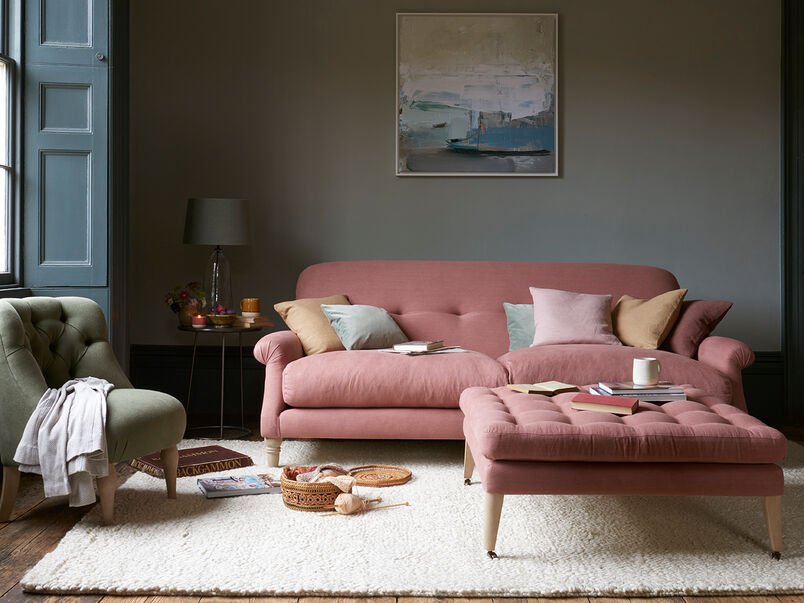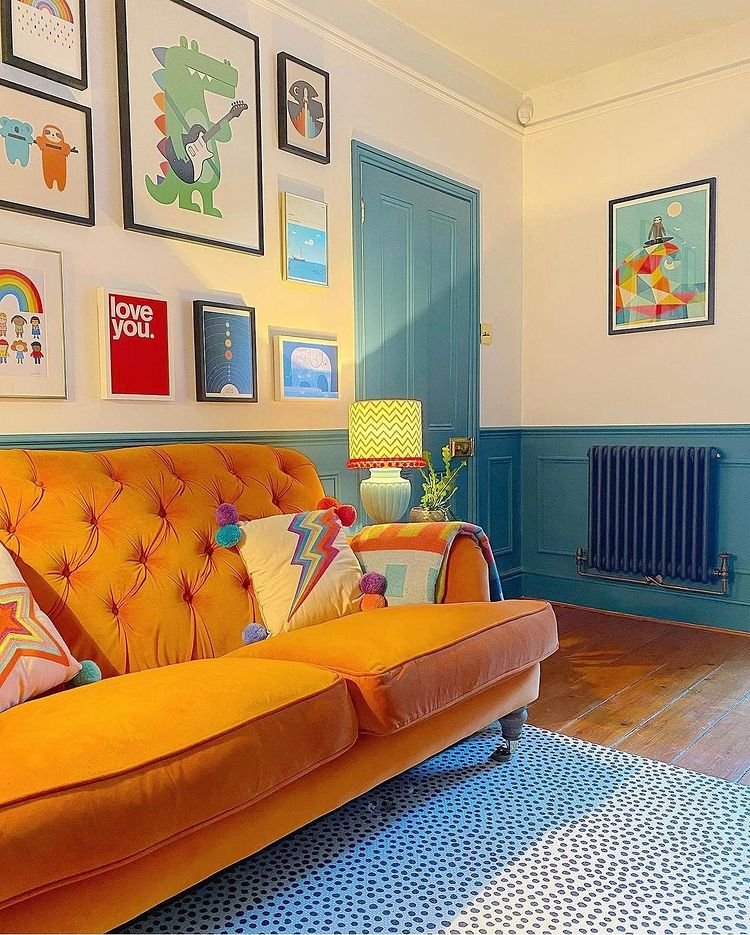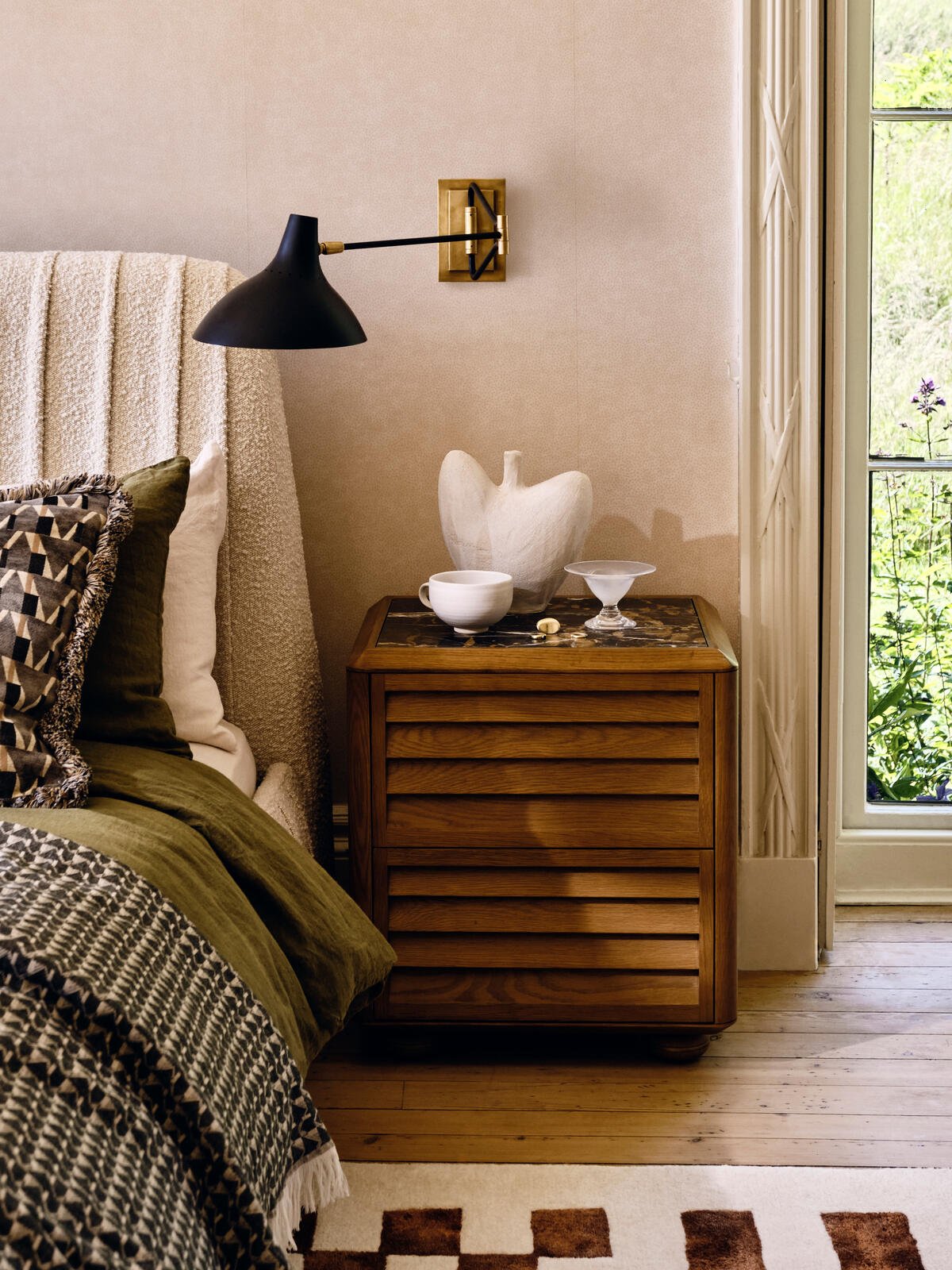Sofa buying guide: how to choose the best sofa
Choosing a sofa is an investment, not only financially but also in style, comfort and time.
I would always suggest that you see (and sit on!) a sofa in person, but aside from how it feels, here are some other points to help you shop.
Material
Loaf Teacake sofa in Pudding Pink clever vintage linen
When it comes to choosing a material I’d first ask what your lifestyle is like. How much time do you spend on the sofa, who sits on it? Do kids climb and eat on the sofa, and do you have any pets? The answer to that will help guide you to suitable materials.
Leather is probably the most durable of materials for a sofa, but often divides opinion and might not be the cosiest choice. It also scratches easily but this can sometimes add to its charm. Cotton blends (like cotton/linen mixes) are very durable and withstand wear and tear. Linen on it’s own is comfortable and easy to clean, however is a slightly thinner fibre and can wear out if used repeatedly. Velvet is popular and luxurious, but is prone to marking and attracting pet hair. Wool is luxurious, soft and comfortable, but comes with a higher price tag.
Velvet sofa from Made.com, by Hornsby Style
Tip: look for fabrics with the word “clever”, “intelligent” or “family” in the name - usually these fabrics have been engineered to be as durable as possible.
Construction
Olive sofa from Sofas and Stuff
The average life of a sofa is 7 years, but a well built one could last up to 15 years (Ideal Home).
You want to firstly check what the structure is made from, and whether it is built well. Ask what the sofa is made from, and avoid anything made with ply or chipboard. Ideally the joinery will be dowelled, glued and screwed, and legs will either be part of the frame or screwed in, rather than just glued.
A good test of the frame is to lift the front of the sofa up in one corner, 15cm off the ground. If the other front leg has also risen, the frame is solid and probably well constructed. If it’s still on the ground then this suggests a weak frame.
You should also do the wobble test - lean on and shake the sofa arms and check that it the sofa doesn’t wobble from side to side.
Colour
Orange sofa in Stacey Dyer’s playroom, @end_of_the_row
Colour comes down to personal taste and the style of your room.
Neutral coloured sofas are probably a safer bet if you’re someone who changes their mind frequently or likes to re-decorate often. Greys, creams and navy will be the most timeless colour choices.
Alternatively, making a statement with your sofa colour is really fun, and you can find sofas in pretty much every colour under the sun to fit your style.
Style
Again this comes down to personal taste, but try to consider the style of your room when you choose a sofa.
If you’ve got more of a classic taste, then a traditional sofa with tufted buttons and leg details might work. If you’ve got a contemporary space then a mid-century style sofa might look great. Or a minimalist room might suit a more stream-lined sofa.
Size & shape
Model 03 from Swyft
How do you sit on the sofa? Upright with legs on the floor, or legs underneath you or to the side? Do you lean on the arms? Do you need firmer support for your posture, or is it more important to you to sink into your sofa?
I’d ask yourself these questions, and then make sure you go to see any sofa you are considering buying to check that it’s the right size and firmness for you.
Chaise sofa from Soho home
To avoid buying a sofa that’s too big for your space (or too small), aiming for a sofa that’s roughly 2/3 the width of the wall it’s going against can help choose the right size. If you’ve got a narrow room, then an extra-deep sofa might over-impose into the space so I would opt for something a little more shallow or upright.
In terms of sofa shape, L shaped sofas create a more conversational layout and help to zone a space, enabling people in the room to be sat facing each other comfortably. Chaise sofas have the same effect although are less comfortable to sit on, since the chaise section doesn’t have a back.
If you’d like my help with your next project, check out my services to see how we can work together. If you’ve enjoyed this blog, don’t forget to subscribe below to receive my new post in your inbox every Sunday.


















